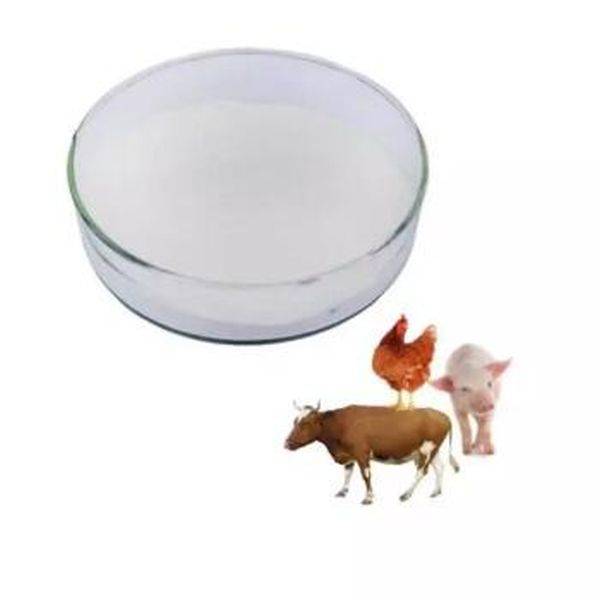-

Phytase, a feed additive that optimizes the structure of the intestine and enhances the absorption of nutrients in the small intestine
Phytase is a general term for a class of enzymes that hydrolyze phytic acid and its salts to produce inositol and phosphate. As a new type of feed additive, phytase has great application potential in the fields of animal nutrition and environmental protection. The research progress in phytase cla...Read more -
Yohimbe has long been known for its fat-burning and aphrodisiac properties
Yohimbe is an evergreen tree that grows in Western and Central Africa, including Nigeria, Cameroon, Congo and Equatorial Guinea. It belongs in the rubiaceae botanical family, and has a scientific name of Pausinystalia yohimbe. It’s traditionally used by Pygmies and Bushmen as an aphrodisiac...Read more -
King of bitters—–Andrographis paniculata
Andrographis paniculata, commonly known as ‘king of bitters’, is an herb traditionally used in Ayurveda and Traditional Chinese Medicine. Andrographis paniculata is used to treat the common cold. It is fairly effective when taken for three to five days after the symptoms first appear. However, th...Read more -
How good it would be for health to take Cordyceps Sinensis!
Cordyceps sinensis is seen as a very precious medicinal mushroom in China and other Asian countries. For over 2000 years, Cordyceps sinensis has been used as a tonic, to increase health and vitality, combat aging and prevent various (age-related) diseases. Cordyceps sinensis is used in traditiona...Read more -
Astaxanthin——Measured as Nature’s Strongest Antioxidant
Fish oil with omega-3 fatty acids isn’t the only thing from the ocean that can improve function in the human body. Astaxanthin is a carotenoid pigment that occurs in trout, microalgae, yeast, and shrimp, among other sea creatures. It’s most commonly found in Pacific salmon and is what gives the f...Read more -
An effective solution to gastrointestinal problems—–Balsam pear
Balsam pear is a traditional ingredient in Asian medicine and cuisine. Its most basic use is to help with gastrointestinal issues. In the United States, studies have shown that it can help people who are coping with diabetes. Extracts of the fruit also might help prevent and treat cancer and mala...Read more -
A powerful brain protectant——Bacopa monnieri
Bacopa monnieri is a perennial herb native to marshy areas of India, Asia, and South America, that has been used for centuries in traditional Ayurvedic medicine to prevent disease, promote healthy longevity, and strengthen the mind. Extensive research has been able to confirm that Bacopa may be a...Read more -
A cognitive enhancing supplement—-Centella asiatica
Centella asiatica, a perennial herb also known as gotu kola, produces fan-shaped, green leaves that are harvested and used for medicinal purposes. Native to China, Japan, India and Indonesia, the herb has a long history of use in these areas. Medical practitioners in the United States and Europe ...Read more -
A powerful antioxidant human care product—–Rutin
Rutin is a bioflavonoid, or plant pigment, that is found in certain vegetables and fruits. Apples are full of rutin. Buckwheat, most citrus, figs, and both black and green tea also contain rutin. In the 1940s, it was called vitamin P, even though it’s not a vitamin.Rutin has powerful antioxidant ...Read more -

Traditional anticoccidial drug with good anticoccidial effect-amlinoline hydrochloride
Amproline hydrochloride is a white or off-white powder; odorless or almost odorless. This product is soluble in water, slightly soluble in ethanol, very slightly soluble in ether, and insoluble in chloroform. The chemical structure of amphetamine is similar to that of thiamine. It is a traditiona...Read more -

Feed additive to prevent rickets, enhance mineral absorption, and promote growth-vitamin D3
Vitamin D3 (Cholecalciferol) is an essential micronutrient that participates in calcification of bones and ultimately achieves optimal bone development and stability. Vitamin D can regulate the balance of calcium (Ca) and phosphorus (P) in the blood. When the concentration of calcium and phosphor...Read more -

Poultry feed fortifier that reduces bleeding and accelerates wound healing-Vitamin K3
Vitamin K3: feed additive raw material, which can mainly promote the synthesis of prothrombin in the liver of livestock and poultry, and promote the synthesis of plasma coagulation factors in the liver. Vitamin K deficiency is rarely seen in adult chickens, sometimes in chicks and young chickens,...Read more